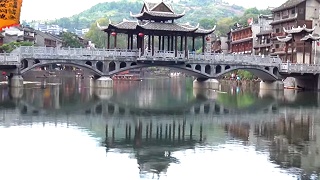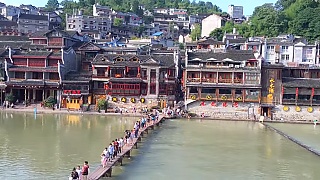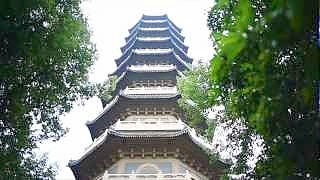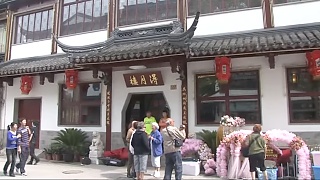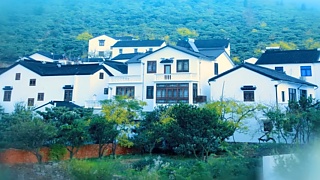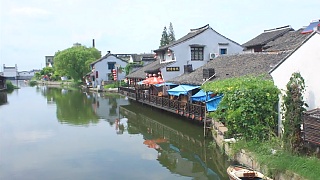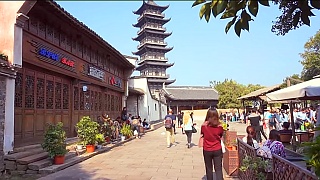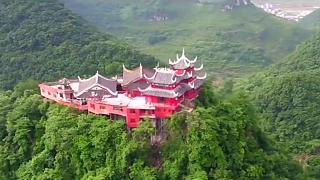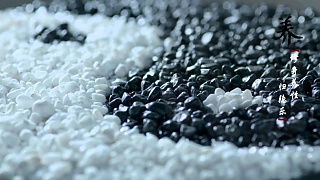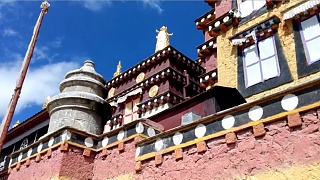惊人的太湖古镇旅游城!中国湖州.
TaiHu Ancient Town is located in HuZhou City, ZheJiang Province, China. It is the core area of TaiHu Lake Dragon Dream Paradise, with a total construction area of about 660,000 square meters. Theater, 10 small theaters, with a total of about 20,000 performing arts seats; an old street with a total length of 9,000 meters that integrates intangible cultural heritage exhibitions, shopping, street performances, etc.; an area of 50,000 square meters, including more than 100 restaurants, about LiYuMen dining area with 20,000 seats; a bar street with 20,000 seats; a large water dancing fountain show with a water area of 35,000 square meters; and 62 inns with different styles, with a total of 4,266 rooms. The three temples and one pagoda (Dao Temple, Confucian Temple, Ten Thousand Buddha Pagoda) will become the most popular area of TaiHu Dragon Dream Park after they all open.
太湖古镇位于中国浙江省湖州市,是太湖龙之梦乐园的核心区域,总建筑面积约66万平方米,分东西两个片区,东侧叫童家村、西侧叫江夏村,包含10个大型剧院,10个小剧场,合计约20000个演艺席位;集非遗展示、购物、街艺表演等功能于一体,总长度达9000米的老街;面积达50000平方米,包含100余家、约2万个餐位的鲤鱼门餐饮区;包含20000个座位的酒吧一条街;水域面积达35000平方米的大型水舞喷泉秀;以及62家风格各异的客栈,合计4266间客房。三庙一塔(道庙、寺庙、孔庙、万佛塔),全部开业后将成为太湖龙之梦乐园最聚人气的区域。
With Wei's Travel ...
[640],shadow=true,start=,stop=Shanghai is one of China's most dynamic and cosmopolitan cities, blending a rich history with modern skyscrapers and vibrant culture. Here's what you need to know as a tourist visiting Shanghai:
Historical and Cultural Landmarks:
The Bund: This iconic waterfront promenade along the Huangpu River features colonial-era buildings on one side and futuristic skyscrapers on the other, offering stunning views of Shanghai's skyline.
Yu Garden: Dating back to the Ming dynasty, Yu Garden is a classical Chinese garden with pavilions, ponds, and rockeries. The nearby Yu Garden Bazaar is a great place to shop for souvenirs and traditional crafts.
Shanghai Museum: Home to an extensive collection of Chinese art and artifacts, including bronzes, ceramics, paintings, and calligraphy, the Shanghai Museum is a must-visit for history and art enthusiasts.
Jing'an Temple: One of Shanghai's most famous Buddhist temples, Jing'an Temple is known for its beautiful architecture, peaceful atmosphere, and towering golden Buddha statue.
Modern Attractions:
Shanghai Tower: Ascend to the observation deck of this iconic skyscraper, the tallest in China and the second-tallest in the world, for panoramic views of the city.
The Oriental Pearl TV Tower: Another iconic landmark, this futuristic tower offers observation decks, a glass-bottomed skywalk, and a revolving restaurant.
Shanghai Disneyland: Located in the Pudong district, Shanghai Disneyland offers a magical experience for visitors of all ages with its themed lands, attractions, and entertainment.
Shopping and Entertainment:
Nanjing Road: One of the world's busiest shopping streets, Nanjing Road is lined with department stores, boutiques, and restaurants. Don't miss the nearby pedestrian-friendly Nanjing Road East, known for its lively atmosphere and street performers.
Xintiandi: This upscale shopping, dining, and entertainment district features a mix of traditional Shikumen-style buildings and modern amenities, making it a popular destination for locals and tourists alike.
French Concession: Explore this historic neighborhood known for its tree-lined streets, charming cafes, boutiques, and art galleries.
Culinary Delights:
Shanghai Cuisine: Sample local specialties such as xiaolongbao (soup dumplings), shengjianbao (pan-fried dumplings), and Shanghai-style noodles.
Street Food: Wander through the city's bustling food markets and snack streets to taste a variety of street foods, from savory pancakes to grilled skewers.
Practical Tips:
Transportation: Shanghai has an efficient public transportation system, including the subway, buses, and taxis. Consider purchasing a rechargeable transportation card for convenience.
Language: While Mandarin is the official language, English is widely spoken in tourist areas, hotels, and restaurants.
Weather: Shanghai experiences four distinct seasons, with hot, humid summers and chilly winters. The best times to visit are spring (March to May) and autumn (September to November) when the weather is mild and comfortable.
Etiquette: Respect local customs and traditions, such as using polite language and avoiding loud behavior in public places.
Shanghai offers a captivating blend of old and new, with its historic landmarks, modern skyscrapers, vibrant culture, and delectable cuisine. Whether you're interested in history, architecture, shopping, or dining, Shanghai has something to offer every type of visitor.

 TaiHu night walk, a beautiful ancient town near ShangHai
TaiHu night walk, a beautiful ancient town near ShangHai